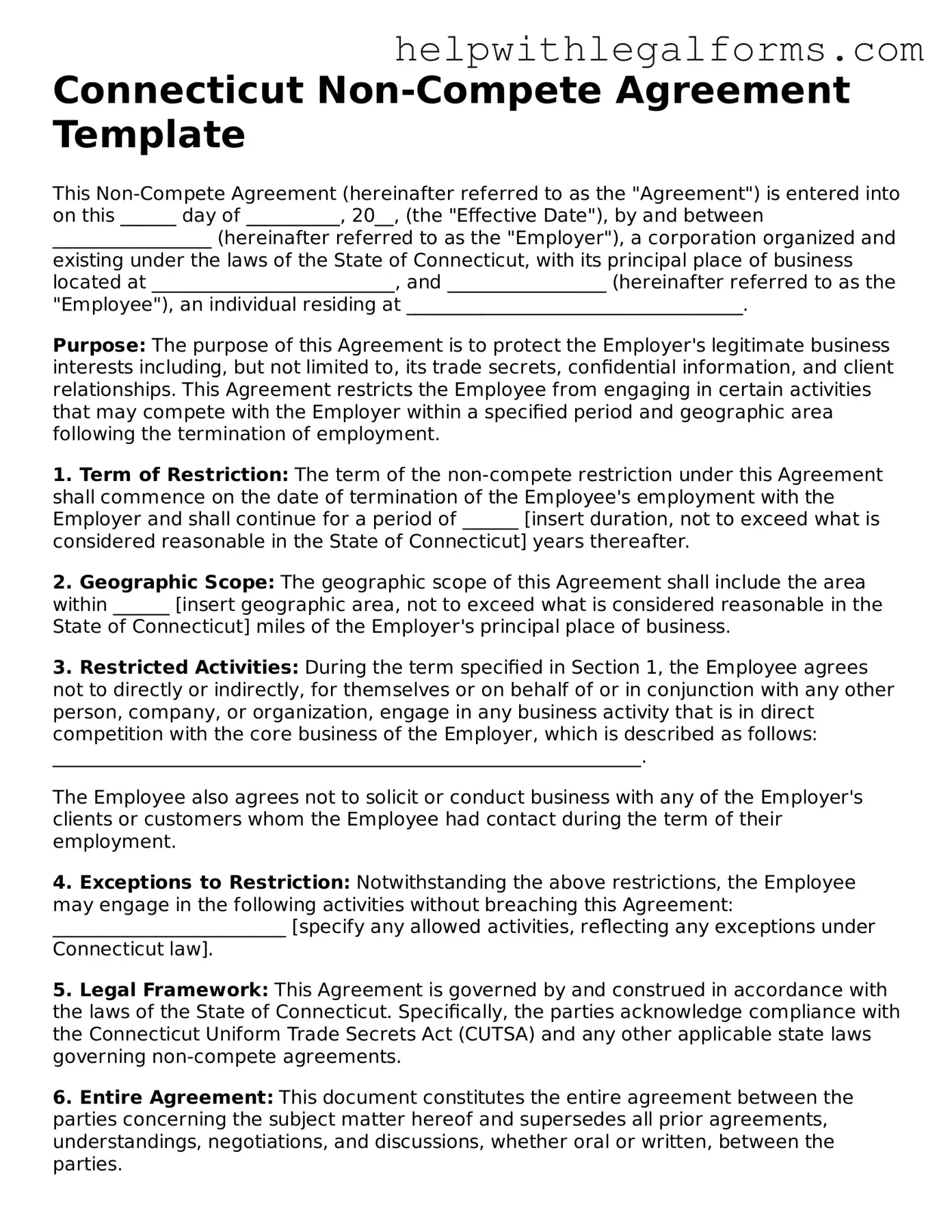Connecticut Non-Compete Agreement Template
This Non-Compete Agreement (hereinafter referred to as the "Agreement") is entered into on this ______ day of __________, 20__, (the "Effective Date"), by and between _________________ (hereinafter referred to as the "Employer"), a corporation organized and existing under the laws of the State of Connecticut, with its principal place of business located at __________________________, and _________________ (hereinafter referred to as the "Employee"), an individual residing at ____________________________________.
Purpose: The purpose of this Agreement is to protect the Employer's legitimate business interests including, but not limited to, its trade secrets, confidential information, and client relationships. This Agreement restricts the Employee from engaging in certain activities that may compete with the Employer within a specified period and geographic area following the termination of employment.
1. Term of Restriction: The term of the non-compete restriction under this Agreement shall commence on the date of termination of the Employee's employment with the Employer and shall continue for a period of ______ [insert duration, not to exceed what is considered reasonable in the State of Connecticut] years thereafter.
2. Geographic Scope: The geographic scope of this Agreement shall include the area within ______ [insert geographic area, not to exceed what is considered reasonable in the State of Connecticut] miles of the Employer's principal place of business.
3. Restricted Activities: During the term specified in Section 1, the Employee agrees not to directly or indirectly, for themselves or on behalf of or in conjunction with any other person, company, or organization, engage in any business activity that is in direct competition with the core business of the Employer, which is described as follows: _______________________________________________________________.
The Employee also agrees not to solicit or conduct business with any of the Employer's clients or customers whom the Employee had contact during the term of their employment.
4. Exceptions to Restriction: Notwithstanding the above restrictions, the Employee may engage in the following activities without breaching this Agreement: _________________________ [specify any allowed activities, reflecting any exceptions under Connecticut law].
5. Legal Framework: This Agreement is governed by and construed in accordance with the laws of the State of Connecticut. Specifically, the parties acknowledge compliance with the Connecticut Uniform Trade Secrets Act (CUTSA) and any other applicable state laws governing non-compete agreements.
6. Entire Agreement: This document constitutes the entire agreement between the parties concerning the subject matter hereof and supersedes all prior agreements, understandings, negotiations, and discussions, whether oral or written, between the parties.
7. Amendment: No amendment, modification, or addition to this Agreement shall be binding unless in writing and signed by both parties.
8. Severability: If any provision of this Agreement is held to be invalid, illegal, or unenforceable, the remaining provisions shall not be affected or impaired.
9. Acknowledgment: By signing below, the Employee acknowledges that they have carefully read and understood the terms of this Agreement and agree to be bound by its terms.
IN WITNESS WHEREOF, the Parties have executed this Agreement as of the Effective Date first above written.
Employer Signature: ______________________________________ Date: _______________
Employee Signature: ______________________________________ Date: _______________
